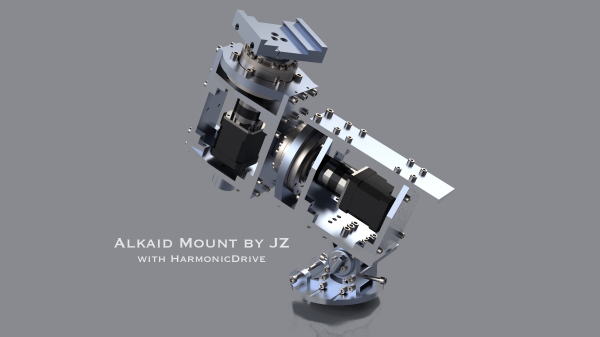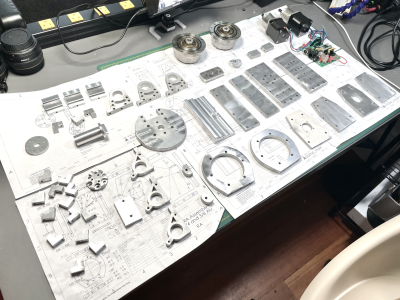Pointing at stars may seem easy on the surface—just mount a telescope to a tripod and you’re done, right? As anyone who’s spent time with a telescope can tell you, it’s not that simple, given that the Earth is always spinning. [Sven] set out to make his own mount to compensate for the rotation of the Earth, which led to some pretty amazing results.
In this project, [Sven] designed a GoTo mount, which is a telescope equatorial mount capable of being pointed at specific parts of the sky and tracking them to allow for long-exposure photos with minimal blur due to the Earth’s movement. He first went down the path of finding the correct harmonic gearbox for the steppers used. A harmonic drive system would allow smooth, precise movement without backlash, and the 100:1 stepdown would provide for the slightest of adjustments.
The steppers are controlled by a custom PCB [Sven] designed around an ESP32-S3. The first PCB had a mistake in the power delivery circuit. After a small tweak, V2 boards arrived and work great. The PCB runs OnStepX, a great open-source project centered around pointing telescopes, cutting down a lot of the software workload on this project.
After all the work put in, you may be wondering how well it works. [Sven] was able to get a pointing accuracy of 1-2 arcseconds from his mount. To get an idea of how great that is, 1 arcsecond is about the same as pointing at a penny from 4 km (2.5 miles) away. Fantastic results, [Sven], and thank you for sending in this great project—be sure to head over to his site and read all the details of this impressive build. If you found this interesting, be sure to check out some of our other telescope-related projects.



 for anything to be seen at all, through the noise. But, this ball of rock we sit on is rotating constantly, so the only solution is to track the object of interest, to compensate. This is referred to as equatorial tracking, and allows the rotation of the Earth to be compensated for during a long exposure.
for anything to be seen at all, through the noise. But, this ball of rock we sit on is rotating constantly, so the only solution is to track the object of interest, to compensate. This is referred to as equatorial tracking, and allows the rotation of the Earth to be compensated for during a long exposure.







